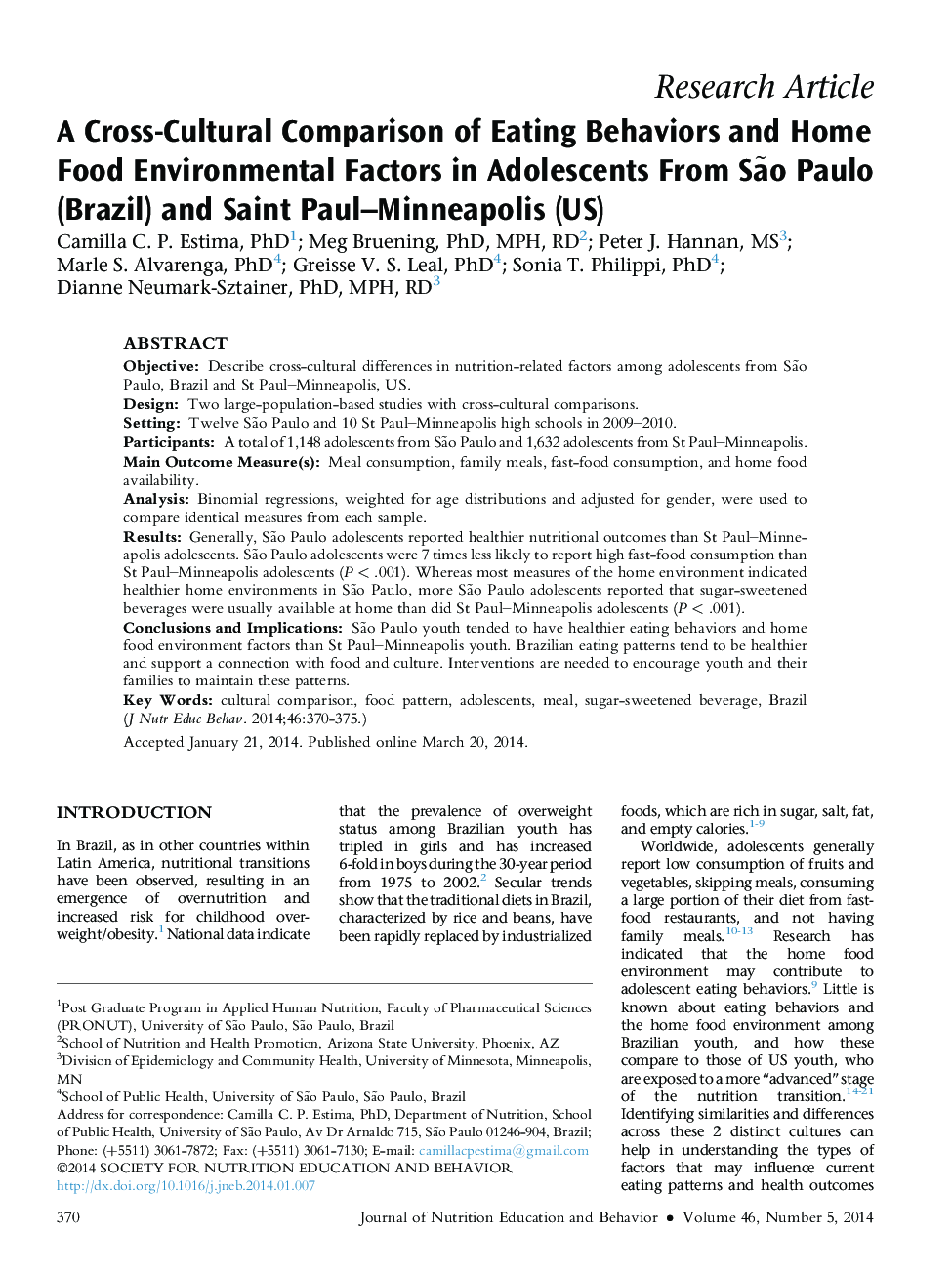| Article ID | Journal | Published Year | Pages | File Type |
|---|---|---|---|---|
| 361242 | Journal of Nutrition Education and Behavior | 2014 | 6 Pages |
ObjectiveDescribe cross-cultural differences in nutrition-related factors among adolescents from São Paulo, Brazil and St Paul–Minneapolis, US.DesignTwo large-population-based studies with cross-cultural comparisons.SettingTwelve São Paulo and 10 St Paul–Minneapolis high schools in 2009–2010.ParticipantsA total of 1,148 adolescents from São Paulo and 1,632 adolescents from St Paul–Minneapolis.Main Outcome Measure(s)Meal consumption, family meals, fast-food consumption, and home food availability.AnalysisBinomial regressions, weighted for age distributions and adjusted for gender, were used to compare identical measures from each sample.ResultsGenerally, São Paulo adolescents reported healthier nutritional outcomes than St Paul–Minneapolis adolescents. São Paulo adolescents were 7 times less likely to report high fast-food consumption than St Paul–Minneapolis adolescents (P < .001). Whereas most measures of the home environment indicated healthier home environments in São Paulo, more São Paulo adolescents reported that sugar-sweetened beverages were usually available at home than did St Paul–Minneapolis adolescents (P < .001).Conclusions and ImplicationsSão Paulo youth tended to have healthier eating behaviors and home food environment factors than St Paul–Minneapolis youth. Brazilian eating patterns tend to be healthier and support a connection with food and culture. Interventions are needed to encourage youth and their families to maintain these patterns.
